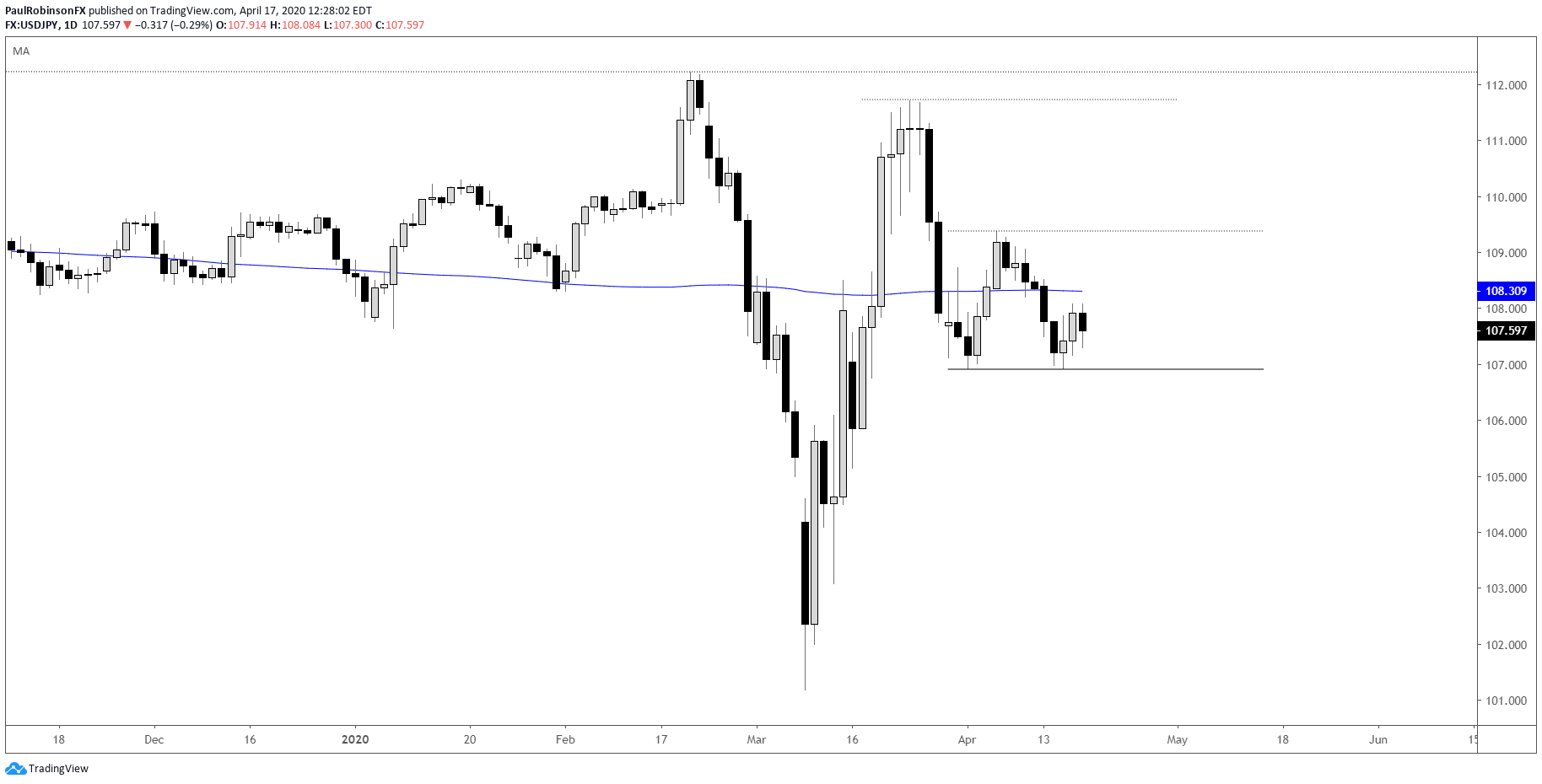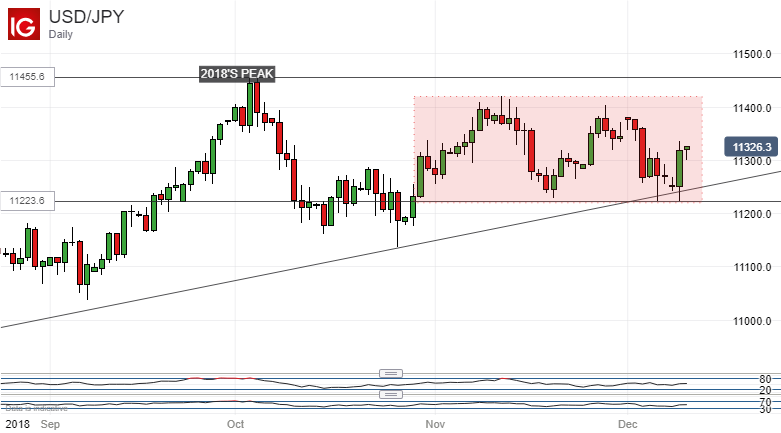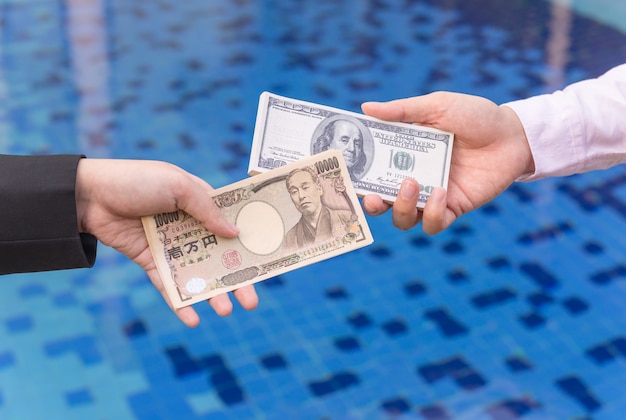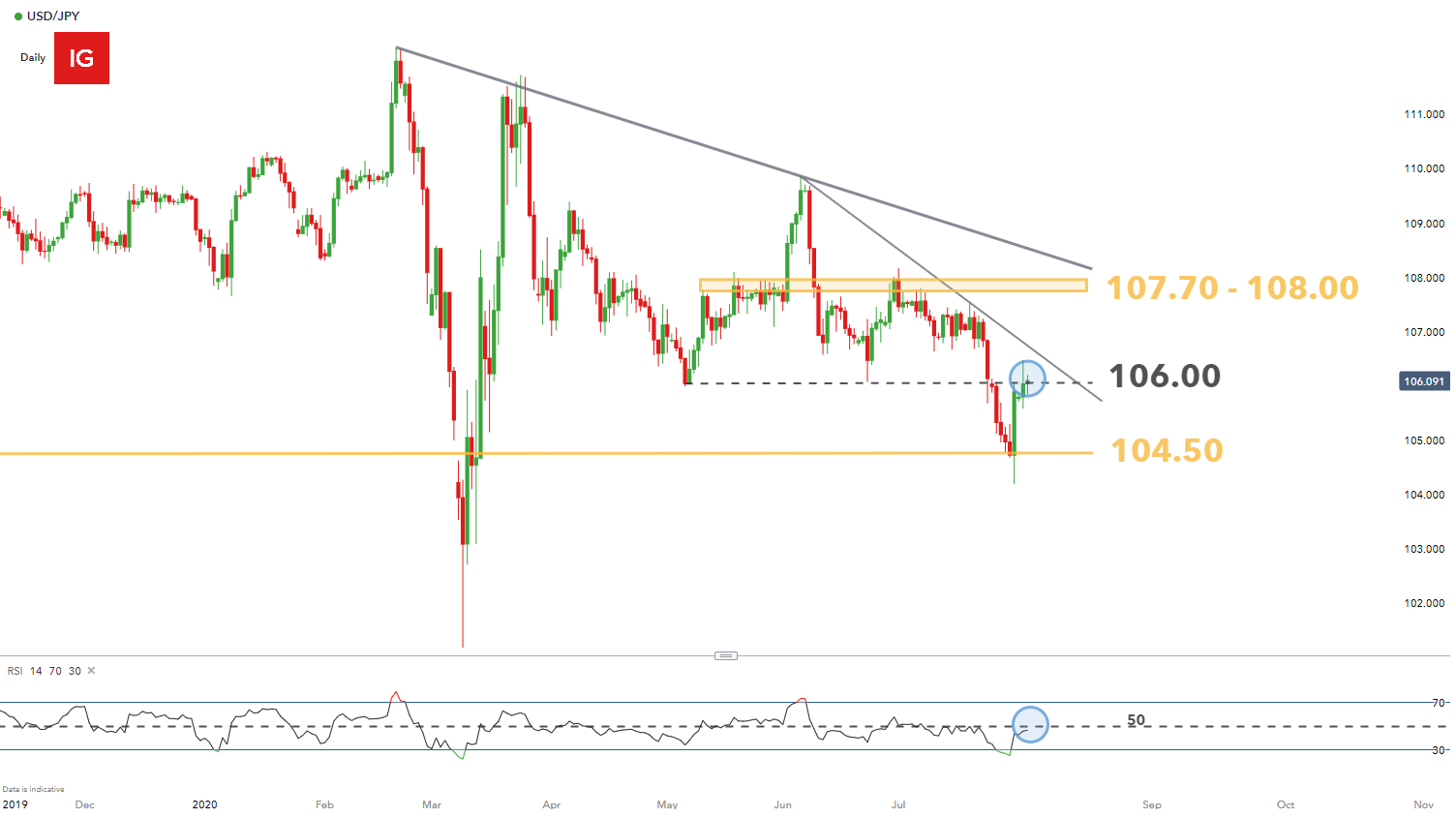

By the middle of the 18th century, /e/ and /we/ came to be pronounced as in modern Japanese, although some regions retain the pronunciation. The spelling and pronunciation "yen" is standard in English, because when Japan was first encountered by Europeans around the 16th century, Japanese /e/ ( え) and /we/ ( ゑ) both had been pronounced and Portuguese missionaries had spelled them "ye". While the Chinese eventually replaced 圆 圓 with 元, the Japanese continued to use the same word, which was given the shinjitaiform 円 in reforms at the end of World War II. The coins and the name also appeared in Japan. Originally, the Chinese had traded silver in mass called sycees, and when Spanish and Mexican silver coins arrived from the Philippines, the Chinese called them "silver rounds" ( Chinese: 銀圓 pinyin: yínyuán) for their circular shapes. The name, "Yen", derives from the Japanese word 圓 ( en, "round"), which borrows its phonetic reading from Chinese yuan, similar to North Korean won and South Korean won. The Bank of Japan maintains a policy of zero to near-zero interest rates and the Japanese government has previously had a strict anti-inflation policy. Since that time, however, the world price of the yen has greatly decreased. The Plaza Accord of 1985 temporarily changed this situation the exchange rate fell from its average of ¥239 per dollar in 1985 to ¥128 in 1988 and led to a peak rate of ¥80 against the US$ in 1995, effectively increasing the value of Japan's GDP in dollar terms to almost that of the United States. The Japanese government focused on a competitive export market, and tried to ensure a low exchange rate for the yen through a trade surplus. Since 1973, the Japanese government has maintained a policy of currency intervention, so the yen is under a " dirty float" regime. The yen had appreciated to a peak of ¥271 per US$ in 1973, then underwent periods of depreciation and appreciation due to the 1973 oil crisis, arriving at a value of ¥227 per US$ by 1980. When that system was abandoned in 1971, the yen became undervalued and was allowed to float. To stabilize the Japanese economy, the exchange rate of the yen was fixed at ¥360 per US$ as part of the Bretton Woods system. įollowing World War II, the yen lost much of its prewar value.

The Bank of Japan was founded in 1882 and given a monopoly on controlling the money supply. The yen replaced the previous Tokugawa coinage as well as the various hansatsu paper currencies issued by feudal han (fiefs). The New Currency Act of 1871 introduced Japan's modern currency system, with the yen defined as 1.5 g (0.048 troy ounces) of gold, or 24.26 g (0.780 troy ounces) of silver, and divided decimally into 100 sen or 1,000 rin. It is also widely used as a third reserve currency after the US dollar and the euro. It is the third-most traded currency in the foreign exchange market, after the United States dollar (US$) and the euro. The yen ( Japanese: 円, symbol: ¥ code: JPY) is the official currency of Japan. The language(s) of this currency do(es) not have a morphological plural distinction. For other uses, see Yen (disambiguation). USD/JPY has pushed below support at 147.24 and 146.61.

Tokyo resorted to currency interventions late last year and could step in again if the yen keeps losing ground. Last week, Vice Finance Minister Kanda, who is Japan’s currency diplomat, warned that the authorities “will not rule out any options on currencies if speculative moves persist” and Ueda’s remarks can also be viewed as verbal intervention to prop up the Japanese currency. Ueda may have also intended to take a swipe at the strong US dollar, which has pummeled the yen. Inflation has consistently been higher than the BoJ’s target of 2% and put into question the BoJ’s stance that inflation is not sustainable.
Usd to japanese yen series#
Ueda’s remarks came after a series of hawkish comments by BoJ members in recent weeks, suggesting that the central bank is preparing the markets for a policy shift. Still, the fact that Ueda said that the BoJ could eventually raise rates was enough to send the yen flying higher on Monday. This was not a signal that Ueda was changing policy, as the Governor reiterated in the interview that the BoJ would “patiently” maintain its ultra-loose policy.

Ueda said in a newspaper interview that the BoJ could have enough data on wage growth by the end of the year to determine whether it can end negative rates.


 0 kommentar(er)
0 kommentar(er)
